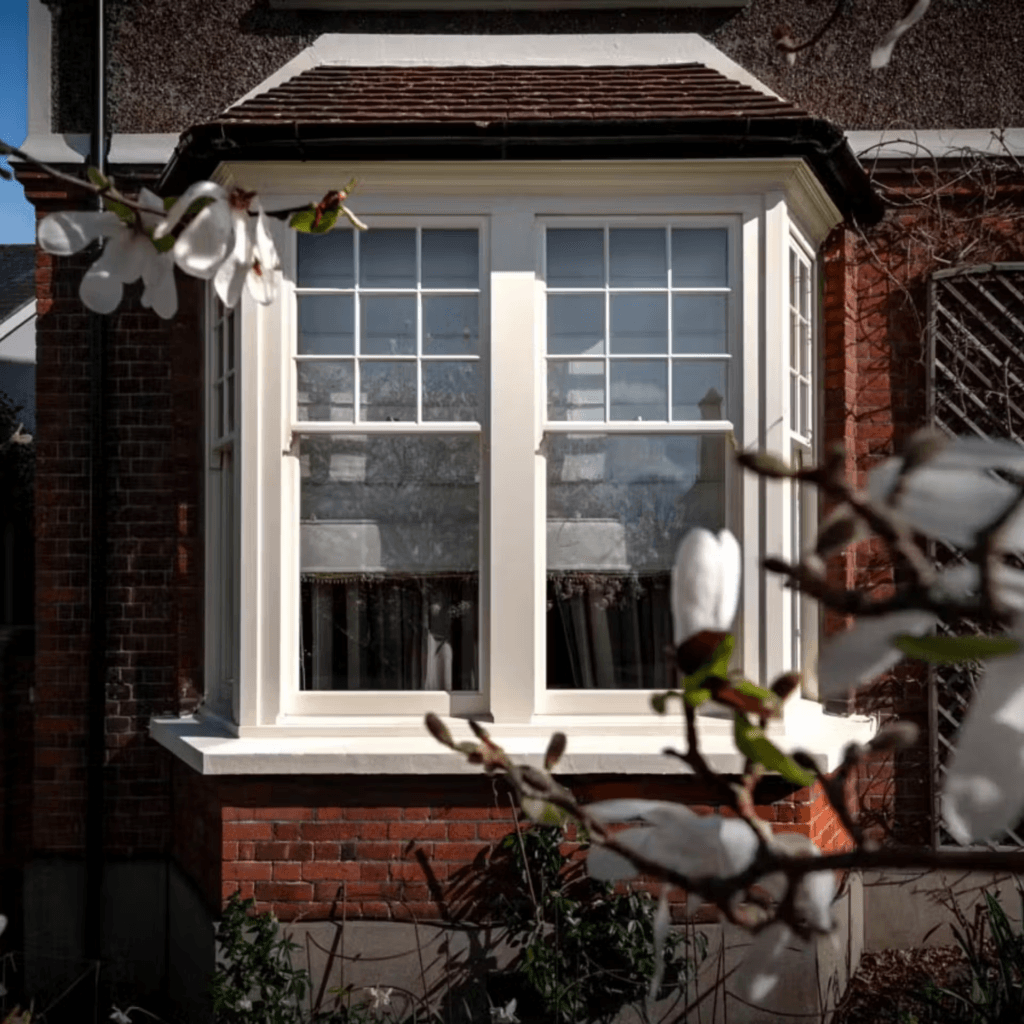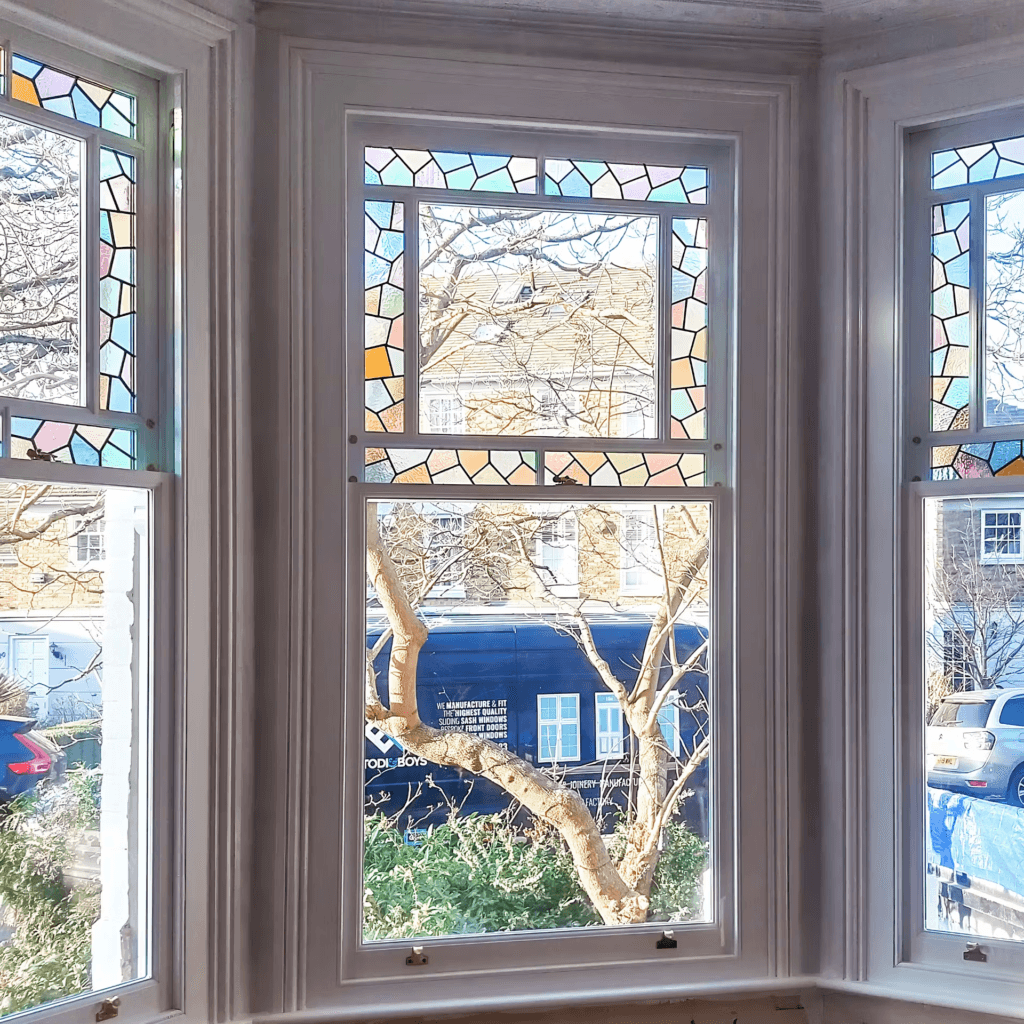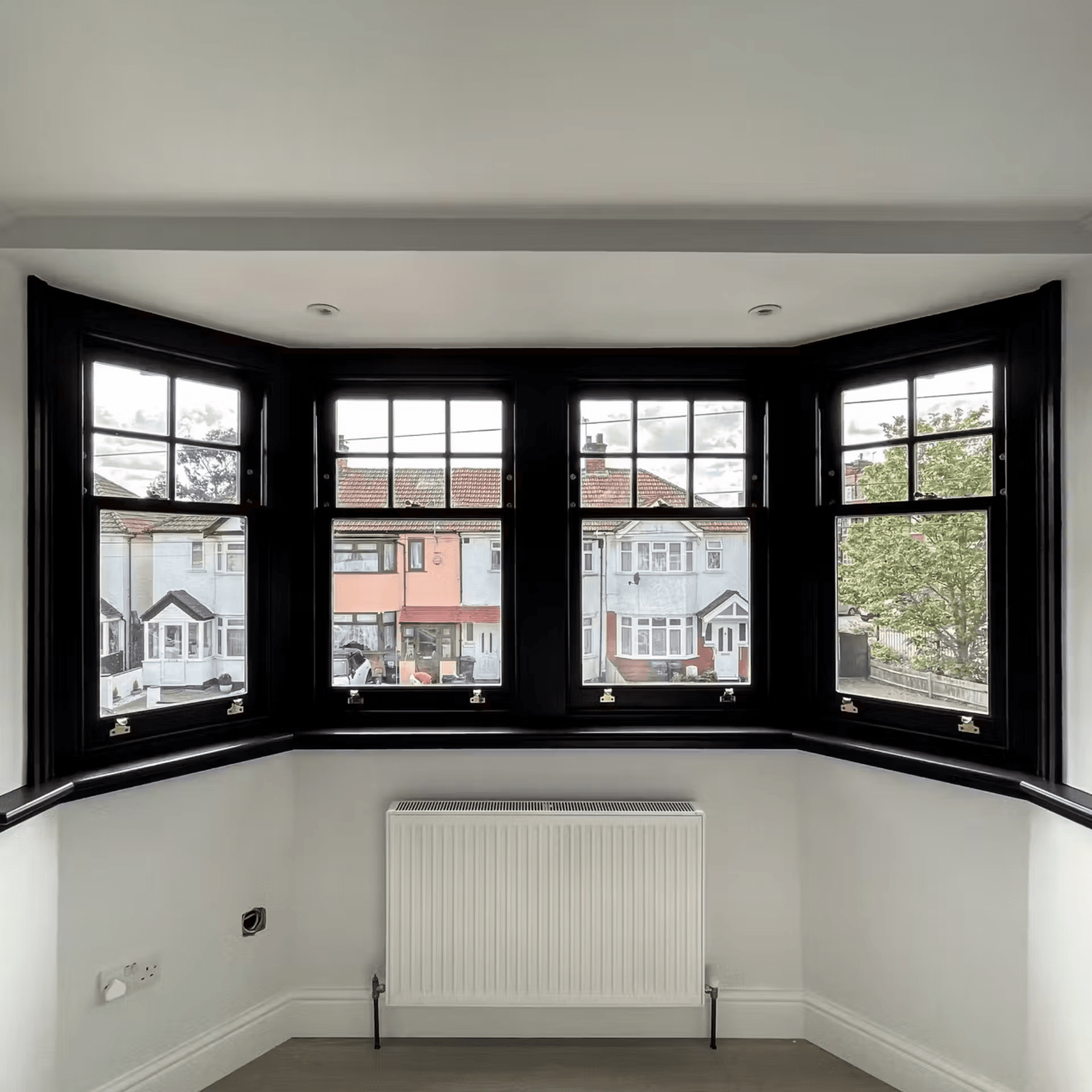For this article, we spoke to Todi & Boys, experts in timber windows to find out how to prevent mould on timber windows.
Mould is a common problem that can cause significant damage to timber windows when they haven’t been maintained properly. Mould forms when moisture, such as condensation or rain collects on the wooden frame.
Over time, this can lead to the structure becoming weakened and discoloured, and can even cause health problems in particularly bad cases. Understanding why mould can form around your window and how to prevent it from happening is crucial for maintaining the aesthetic and functionality of your wooden windows.
What Causes Mould Around Timber Windows?
Mould on timber windows is usually caused by excess moisture, with condensation often being the main culprit. When warm air hits a cold window pane, water vapour condenses and then accumulates around timber frames, creating a perfect breeding ground for mould.
If ventilation around the area is poor, this worsens the issue. Poor airflow stops moisture from escaping, meaning the damp conditions persist. Timber is susceptible to mould as it is porous, meaning it absorbs moisture, speeding up mould growth.
How to Prevent Mould on Timber Windows
Practical Steps to Reduce Humidity and Prevent Condensation
To prevent condensation, consider using moisture-absorbing materials like silica gel or placing draught excluders around your windows. Keep the indoor humidity level below 60% to reduce the chances of condensation forming on window panes.
Effective Ventilation Techniques
Ensure proper ventilation in your home by opening windows regularly to allow air to circulate, especially in areas prone to high moisture, like kitchens and bathrooms. Installing trickle vents on windows or using extractor fans can help maintain a dry environment.
Why and How to Use Dehumidifiers

Dehumidifiers are essential in reducing humidity levels in rooms with excess moisture, especially in winter when ventilation is limited. Place a dehumidifier near windows to help maintain dry air and reduce the likelihood of mould growth on timber window frames.
Mould Prevention for Single Glazed Timber Windows
Specific Considerations for Preventing Mould on Single Glazed Windows:
Single-glazed windows are more prone to condensation, which can lead to mould growth on timber frames. To reduce this, it is important to maintain a constant indoor temperature and use insulated curtains or blinds during colder months. These simple changes can help reduce the temperature differential between the indoor air and window surfaces, preventing moisture build-up.
Insulation and Sealing Tips for Older Timber Window Frames:
Proper insulation is crucial for single-glazed windows. Applying weatherstripping around window frames helps seal gaps where cold air can enter, reducing the chances of condensation forming. Adding secondary glazing can also significantly improve insulation, reducing drafts and moisture accumulation on wooden window frames.

How to Get Rid of Mould on Windows
Cleaning Black Mould on Windows
To effectively remove black mould from timber windows, start by protecting your hands and eyes with gloves and goggles. Mix a cleaning solution of water and mild detergent, or use white vinegar, which naturally kills mould spores. Apply the solution to affected areas using a cloth or sponge and scrub gently. For tougher mould, a dedicated mould cleaner for wood surfaces can help. Avoid excessive scrubbing to protect the finish of the timber.
Natural Remedies and Store-Bought Products

Natural mould removers such as a paste of baking soda and water can work wonders in loosening mould. Alternatively, use commercial mould-removal sprays that are specifically designed for timber windows, as they prevent further mould build-up and preserve the wood’s integrity. Ensure proper ventilation after cleaning to keep moisture levels low, preventing mould from returning. Always test a small area first to check that the product does not damage the wood finish.
Why Condensation Causes Mould on Timber Windows
The Science of Condensation and Mould Growth
Condensation occurs when warm, moist air meets a cold surface, causing water to collect on windows. This trapped moisture creates an ideal environment for mould growth, particularly on timber window frames, which absorb the moisture. Over time, the presence of water can lead to the development of black mould, damaging both the wood and the indoor air quality.
Balancing Temperature and Humidity
To prevent condensation, it’s crucial to maintain consistent indoor temperatures and reduce humidity levels. Using dehumidifiers, improving ventilation, and ensuring proper insulation around windows can help. By balancing these factors, you can significantly reduce the likelihood of condensation and the mould that often follows.
Tips for Maintaining Timber Windows to Prevent Mould
Ensuring Proper Sealing and Weatherproofing
Properly sealed and weatherproofed timber windows help prevent moisture from seeping in and reduce the risk of condensation. Use weatherstripping or silicone sealant to fill gaps around the frames, preventing cold drafts that can cause condensation.
Regular Maintenance Checks
Regularly inspect timber window frames for signs of wear, cracks, or damage. Ensure that any seals or caulking are intact, as leaks can lead to moisture accumulation. Promptly repair damaged areas to avoid long-term moisture build-up, which promotes mould growth.
Long-Term Strategies to Prevent Mould on Timber Windows
Tips for Ongoing Mould Prevention:
- Regularly clean and inspect timber windows to catch any early signs of mould.
- Apply mould-resistant treatments to window frames to prevent fungal growth.
- Use breathable materials around windows to promote air circulation and avoid moisture traps.
- Install dehumidifiers in rooms prone to high humidity.
- Maintain consistent indoor temperatures and ventilation to reduce condensation.
- Ensure attic and basement spaces are properly ventilated to prevent excess moisture from affecting the windows.
By improving ventilation, controlling humidity, and maintaining window seals, you can effectively prevent mould on timber windows.
Regular checks and upkeep of your windows not only prevent mould but also extend the lifespan of the timber and improve energy efficiency in your home. Preventing mould through consistent care ensures your windows remain functional and aesthetically pleasing for years to come.

